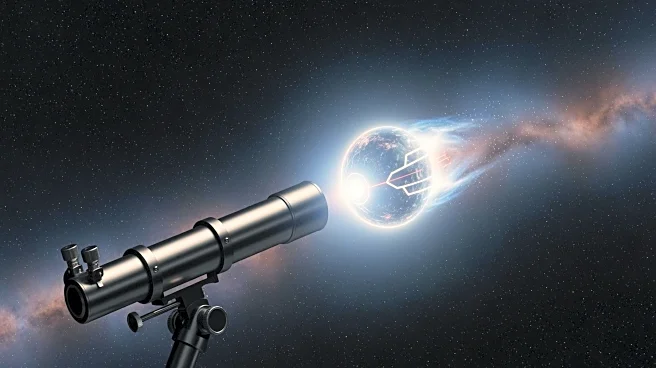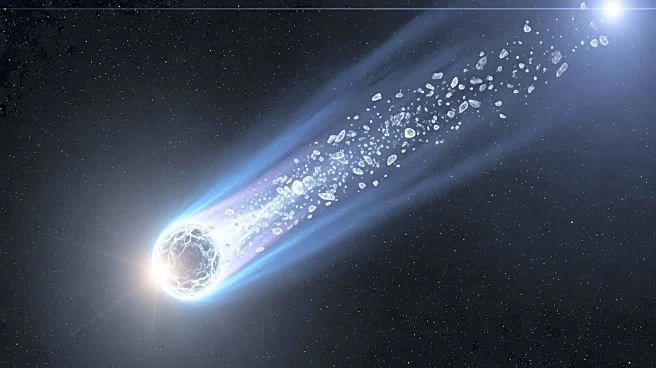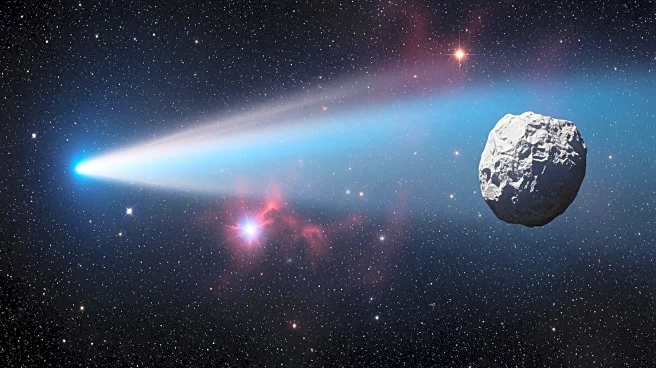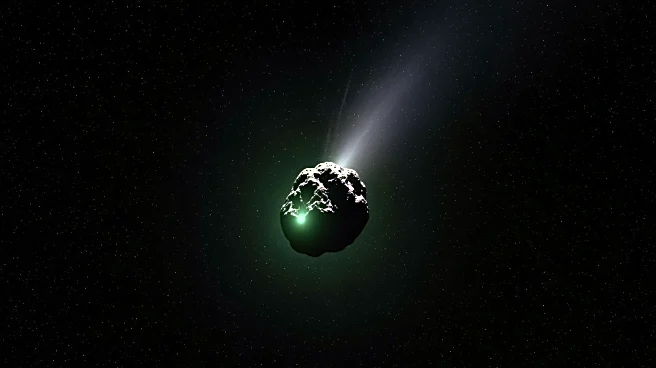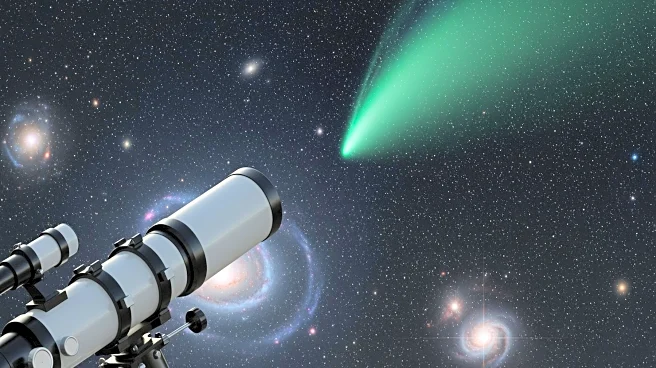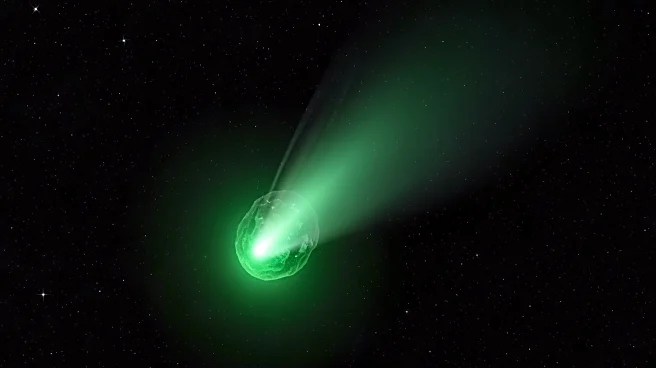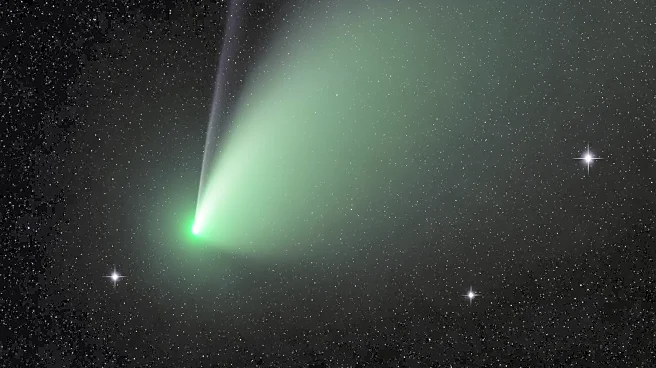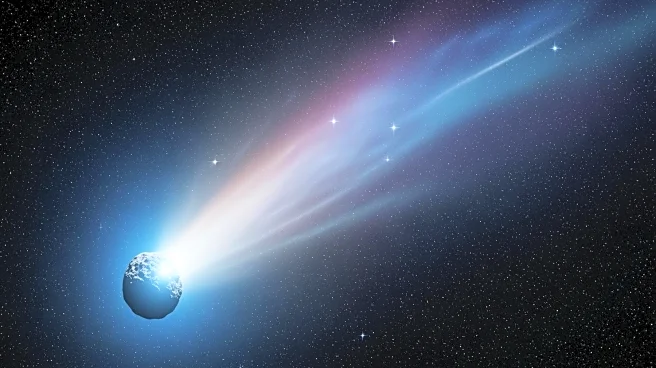What's Happening?
Recent images of the interstellar object 3I/ATLAS, captured by the Lowell Discovery Telescope in Arizona, reveal a faint haze surrounding the object but no cometary tail. The images, taken when 3I/ATLAS was
at a distance of 1.38 astronomical units from the Sun, show a greenish emission of diatomic carbon, enhanced with a narrowband filter. Harvard astrophysicist Avi Loeb noted the absence of a dust tail, which typically results from intense evaporation as a comet approaches perihelion. This observation is surprising given NASA's report of non-gravitational acceleration for 3I/ATLAS, suggesting significant mass loss during perihelion. The angle between 3I/ATLAS and the Sun will increase in the coming weeks, potentially allowing observers to confirm the presence of a cometary tail.
Why It's Important?
The study of 3I/ATLAS provides valuable insights into the behavior of interstellar objects, which are rare visitors to our solar system. Understanding the dynamics of such objects can enhance our knowledge of cometary physics and the processes governing their interactions with solar radiation. The absence of a cometary tail challenges existing theories about mass loss and tail formation, prompting further investigation into the object's composition and trajectory. This research could have implications for future studies of interstellar objects, potentially influencing how scientists predict and analyze their behavior.
What's Next?
As the angle between 3I/ATLAS and the Sun increases, terrestrial observers may gain a clearer view of the object, allowing for more definitive conclusions about the presence of a cometary tail. Researchers and space enthusiasts are also awaiting NASA's release of high-resolution HiRISE images obtained in early October 2025, which could provide additional data on the object's structure and behavior. Continued observation and analysis will be crucial in understanding the unique characteristics of 3I/ATLAS and its implications for cometary science.



